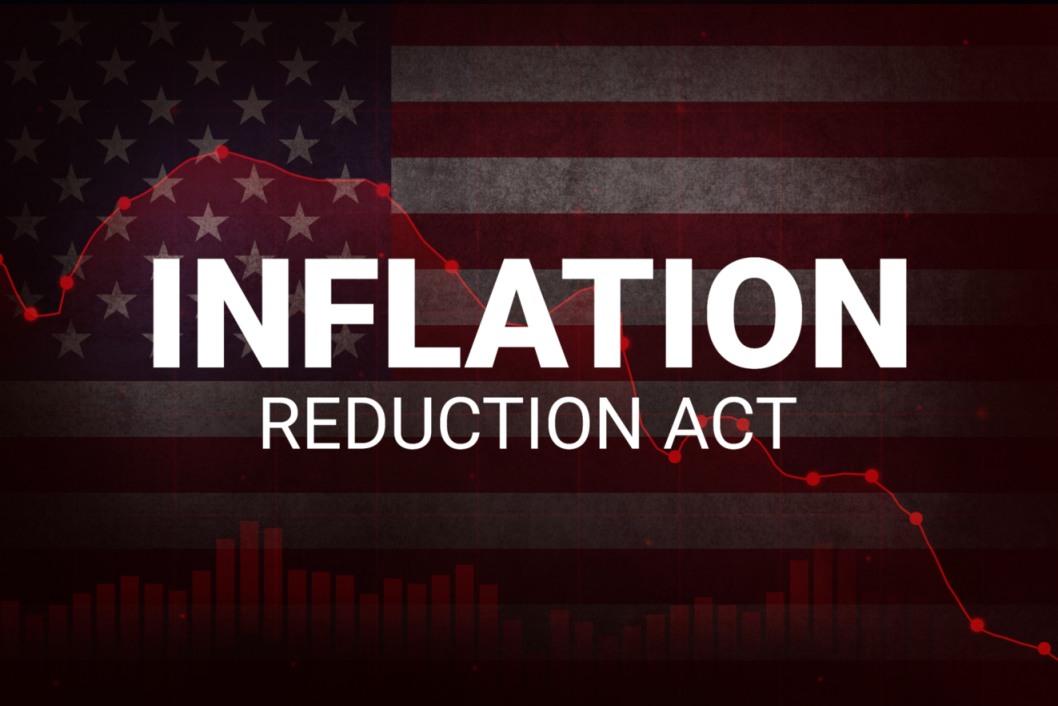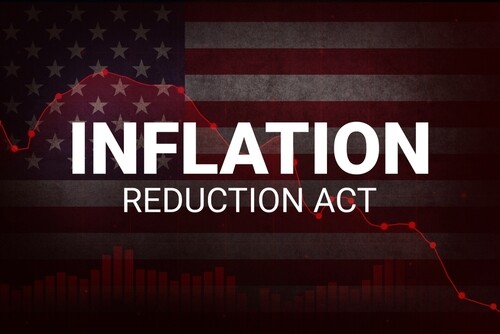Abstract: As it directly addresses the global challenges of climate change and environmental degradation, the clean energy industry has gained significant attention from governments and businesses worldwide. The Inflation Reduction Act (IRA) of the United States, which is partially intended to promote the local clean energy industry, caused significant confusion within the EU due to the local-content-requirement provisions of the Act. The Act agitated the EU to develop its own version as a response. However, the response from the EU lacks typical geoeconomic components, such as a significant preference for local content. Although experts and analysts allude to specific terms of the Act discussing the economic and political implications, they ignore the geoeconomic reality behind the Act. Hence, this essay examines the strategic implications of the IRA from a geoeconomic perspective and the corresponding reactions from the European Union (EU). By delving into the historical development of geoeconomics, this essay expounds on the criticality of geoeconomics in contemporary statecraft. Consequently, the essay emphasizes the need to incorporate geoeconomic strategies as part of the EU’s economic policy formulation to maintain global leadership in critical industries.
Problem statement: How to understand the Inflation Reduction Act’s (IRA) geoeconomicimplications?
So what?: The EU needs to consider the IRA as a geoeconomic tool and formulate policies that will ensure the competitiveness and resilience of the EU’s general industrial position relative not only to that of the U.S. but also globally.

Source: shutterstock.com/Visuals6x
Dominance in Key Industries
Climate change and environmental degradation have become grave challenges that endanger human well-being and existence. Addressing these pressing issues while reaping the benefits of industrialization has become imperative for contemporary economies. To this end, technological industries hold immense potential as key stakeholders in crafting sustainable solutions in the long term.
The clean energy industry has attracted enormous interest and investments from governments, businesses, and individuals globally because it directly addresses the global concerns of climate change and environmental degradation. At the same time, clean energy has become a vital industry in which states seek to gain an edge over others, considering the possible geopolitical leverage of such an industrial leadership.
Owing to the paramount significance of critical industries in determining the relative industrial status of the U.S., Congress enacted the Inflation Reduction Act (IRA) to ensure the alignment of national policies with the strategic objective of securing leadership within the green industry, among other objectives. Meanwhile, in the EU, the Act was considered a radical tool that may inadvertently place the green industry of the EU at a disadvantage in comparison to the U.S.
Congress enacted the Inflation Reduction Act to ensure the alignment of national policies with the strategic objective of securing leadership within the green industry.
It is not surprising to observe attempts by states to maintain their dominance in important industries, as such attempts are consistent with the trends and patterns of geoeconomic history. The state’s geopolitical aspirations shape statecraft, and the economy is a vital tool of the statecraft. This combination of economics and geopolitics is termed “geoeconomics.” With the potentiality of the clean energy industry for the future due to its criticality in solving global problems enumerated above, the industry has become a ground for competition among states, primarily for the industry’s leadership as a geoeconomics tool.
Emphasizing the necessity of geoeconomics in the EU’s contemporary statecraft requires understanding geoeconomics and its relation to the EU’s economy. This relationship provides a solid basis for justifying state intervention and its necessity in trade and economy in the context of interstate competition based on relative gain.
The Relevance of Geoeconomics
Despite having a robust economy, the U.S. frequently behaves undiplomatically by using force rather than wealth. However, in recent decades, Washington has been neglecting a tradition that dates back to the country’s founding — the methodical application of economic tools to achieve geopolitical goals.[1]
Mobilizing economic tools for geopolitical ends has historically been a major strategy of the U.S. The Lend-Lease policy of 1941 allowed the United States to provide Great Britain, France, the Republic of China, and eventually the USSR and other Allies with the defence equipment required to win the Second World War. The Bretton Woods Agreement was signed in July 1944 by representatives from the Allied nations, with the U.S. serving as the signatory. The agreement was unequivocal in its aspirations that improved international economic cooperation, based on American and British principles, could contribute to preventing the horrors of another world war.
The European Recovery Program, commonly known as the Marshall Plan, implemented from April 1948 to December 1951, stands as an extraordinary triumph that continues to leave a lasting impact. With a financial commitment of $13 billion, the United States provided substantial economic aid to Western European economies, facilitating the restoration of industrial and agricultural production, the establishment of financial stability, and the expansion of trade in the aftermath of World War II. The strategic approach adopted by the United States in reconstructing war-torn Europe not only bolstered its influence but also laid the foundation for its enduring relationship with the Western world in the subsequent decades. After the successful implementation of the European Recovery Program, President Dwight Eisenhower skillfully employed economic pressure in 1956 by threatening to destabilize the British pound, thereby compelling Britain to halt its invasion of Egypt and withdraw from the Suez Canal. This bold geopolitical manoeuvre remains one of the most audacious actions witnessed in the previous century.
The European Recovery Program, commonly known as the Marshall Plan, implemented from April 1948 to December 1951, stands as an extraordinary triumph that continues to leave a lasting impact.
However, according to Blackwill and Harris, the geoeconomics component of U.S. statecraft began to wane during the Johnson and Nixon administrations.[2] During this period, a series of military engagements followed, such as the war in Vietnam, the interventions in Angola, Lebanon, Grenada, and Panama, the First Gulf War, and the campaigns in the Balkan and the Wars in Iraq and Afghanistan, to mention a few. Hence the waning of geoeconomics could be attributed to the prevalence of direct military engagements that turned the attention of the policymakers to direct military engagements rather than geoeconomic means
Today, in the context of rising powers, such as China and India, and various economic blocks that seek to secure their economic interests in the global economy, an increasing number of states are engaging in geopolitics through economic means, seeking to advance strategic goals that, in the past, were frequently the product of military force or conquest. One example is China’s Belt and Road Initiative (BRI) encircling global trade routes, promising infrastructural investments in participating countries, and the China-led Asian Infrastructure Investment Bank (AIIB) positioning itself as a rival to the U.S.-led World Bank. Another is Russia’s threat of reducing the energy supply to the EU. In a clear response to China’s own encirclement strategy around India’s periphery, India has also intensified its strategic expansion initiative with a decidedly geoeconomic overhaul targeted at India’s neighbours, extending new credit lines to Nepal and Mauritius, new high-speed data links to Myanmar, new rail links to Sri Lanka, and easy credit schemes to the Maldives among others.
An increasing number of states are engaging in geopolitics through economic means, seeking to advance strategic goals that, in the past, were frequently the product of military force or conquest.
China’s growing influence in international trade and its quest for securing key supply chains have led to an increasing number of instances where it has taken over strategic ports across the globe. While China often justifies its actions as purely economic ventures, the implications of these takeovers go beyond trade and have strategic and geopolitical ramifications. One of the most prominent examples is the acquisition of the Greek port of Piraeus by China’s state-owned COSCO Shipping in 2016. This move provided China with a key entry point into Europe, giving it a significant foothold in the Mediterranean Sea. With Piraeus strategically located at the crossroads of Asia, Europe, and Africa, China can exert greater control over the region’s shipping routes and gain access to European markets. This acquisition drew attention from the European Union and the United States, as it highlighted China’s expanding influence and raised concerns about the potential impact on European security and economic interests.
Similarly, China has also taken over key ports in other parts of the world, including Port Darwin in Australia, Hambantota in Sri Lanka, and Gwadar in Pakistan. These instances of China taking over strategic ports underscore its ambitious efforts to expand its influence in global trade and secure key supply chains. However, there are concerns regarding China’s intentions and the possibility of these strategic assets being exploited for military or political purposes, thereby altering their intended benefits and turning them into geoeconomic tools.
In the context of the modern globalized world, countries not only strive to maintain economic leverage individually. Rather, they also actively seek opportunities to collaborate and create economic blocs to secure potential benefits, consequently fostering the establishment of diverse new institutions.
BRICS (Brazil, Russia, India, China, and South Africa) is experiencing significant economic growth and increasing influence on the global stage. The member countries are expanding their presence in international institutions such as the World Bank and the International Monetary Fund. Additionally, they invest heavily in infrastructure to encourage business growth and improve competitiveness. BRICS is also cooperating on initiatives such as the New Development Bank, which aims to finance development projects in member countries and other emerging economies.
BRICS is experiencing significant economic growth and increasing influence on the global stage.
“The Atlantic Declaration: A Framework for a Twenty-First-Century U.S.-UK Economic Partnership” was announced on June 08, 2023, highlighting the need to ensure U.S.-UK leadership in critical and emerging technologies. These technologies include semiconductors, quantum technologies, artificial intelligence, cutting-edge telecommunications, and synthetic biology.[3] Ensuring U.S.-UK leadership in critical and emerging technologies is intended by working together on concrete collaborative R&D projects, expanding public-private discussion across our key technologies, and co-mobilizing private capital for strategic innovations. This approach highlights the significance of the private sector in developing and maintaining a global technological edge.
As more and more countries are recognizing the significant role that economic influence plays in shaping global affairs, the EU must take notice and leverage its economic prowess to secure its position on the global stage. Hence, the EU needs to reshape its economic strategies in a way that will secure global leadership in critical industries before it falls too far behind. Through its recent IRA, the U.S. and other countries leverage their economic strength to gain more influence and power in global affairs. To balance this influence, the EU needs to focus on developing technology and prompt innovation, as well as formulating strategies to lead critical industries. Such an approach will provide more geopolitical leverage in the global power balance. By doing this, the EU can emerge as a dominant economic and geopolitical force globally.
Why Geoeconomics?
Domination and control of the leading global industries are becoming increasingly important for nations to influence and shape global affairs through economic power. That entails the capacity to pursue their strategic interests and project their influence worldwide. While military might and political influence have historically been crucial components of a country’s power, with the increasing globalization, the global economy has now emerged as a critical arena for nations to assert their dominance and realize their geopolitical ambitions. Such a transformation in global politics can be attributed to increased globalization and, consequently, to the convergence of economies. Therefore, to understand why the leadership of crucial global industries is essential, one needs to consider the unprecedented degree of globalization and the role that today’s economy plays in shaping global politics.
Additionally, countries that are able to control key technologies and industries can gain a significant edge over their rivals. For instance, countries that dominate the tech sector, such as the United States and China, can use their influence in these critical industries to exert their influence geopolitically. Likewise, control over the energy or natural resources sectors can give a country an essential tool to wield power and influence on the world stage. The ability to dominate these industries requires a significant investment of resources, capital, and expertise.
Countries that dominate the tech sector can use their influence in these critical industries to exert their influence geopolitically.
Therefore, the notion of geoeconomics necessitates the establishment of a robust and progressive local economy that can effectively be mobilized as a tool of statecraft and simultaneously withstands various global challenges. As a result, the active involvement of the state in the economy becomes imperative. To achieve the necessary economic power, nations often use policies such as subsidies, export controls, and tariffs to bolster their home industries. Ultimately, dominance over key industries can help nations gain a technological advantage over their rivals to achieve their geopolitical ends. In the long run, economic dominance is becoming increasingly intertwined with geopolitical influence, and nations that can achieve dominance in key technologies and industries will be better positioned to assert their power and advance their national interests.
State Intervention in Trade and Laissez-Faire Economic Thought
Despite some classical economists’ quest to define the economy as distinct from politics, the relationship between the two has not been linear.[4] The fundamental reason has been that domestic economic growth promotes the political standing of the state relative to other states. Hence, the dynamics of economic competition play a pivotal role in shaping the world’s geopolitical landscape. Although some argue that state intervention can stimulate economic growth, this assertion is often challenged by advocates of laissez-faire economics who promote minimal government intervention in the economy. This contention warrants emphasis in light of the prevailing Western ideology that advocates for minimal government intervention in the economy because it is perceived as deleterious to economic growth, necessitating a distinct demarcation between politics and economics.
The dynamics of economic competition play a pivotal role in shaping the world’s geopolitical landscape.
History shows that states actively played a crucial role in the economy and trade when they deemed such a role crucial to their geopolitical standing. It is a phenomenon that can be observed from European maritime exploration in the early 15th century to today’s technology industries. When European states scrambled for the Indian Ocean trade between the late 15th century and late 19th century, they were sponsored and mandated by imperial European states; the need to dominate the trade in the Indian Ocean seemed a geopolitical end. For example, the Portuguese control of the spice trade in the early 16th century gave them an advantage over other European states. It helped to strengthen their position within the global trading system.[5] In addition, the European powers that followed the Portuguese adopted the same tactics in dominating the Indian Ocean trade.
In the early 20th century, securing oil supply became a highly important endeavour when the entire British Navy was converted to utilizing oil as its primary fuel source. The British government’s support initiated the first oil exploration on Persian soil. For example, due to the possibility of the Royal Dutch/Shell firm acquiring the company due to cashflow problems, a contract was struck between Anglo-Persian and the British government.[6] Churchill proposed an oil bill to parliament in June 1914 that called for the British government to invest $2.2 million pounds in Anglo-Persian oil. However, the concern for the British government was not merely the Royal Navy but the future of Britain.
Throughout the nineteenth century, the U.S. expanded its domestic market through the protection offered by tariffs against European competitors. In addition, the U.S. and Germany were able to reach a position to challenge British trade hegemony only through strictly nationalist policy. Over the past decades, the U.S. government, via its funding, has also played a significant role in developing important scientific and medical advancements.[7]
China’s economic rise has been nothing short of phenomenal in recent years. With the economic reforms of the 1970s, China began to move towards an “open-market economy.” In just a few decades, especially between the mid-1990s and 2017,[8] the country has transformed itself from a struggling agricultural economy to a modern industrial and technology-driven powerhouse that now rivals the U.S. in many areas. This remarkable transformation has caused considerable anxiety for many Western economies that have long dominated the global economy. However, China’s rise seemed to follow the same path as the rise of Western economies that accompanied the state’s power in the eighteenth and nineteenth centuries.
Given the international economic competition among states, which entails state intervention with its regulatory power within the realm of trade, private entities may lack the necessary bargaining power to effectively challenge the sovereign authority of another state that employs mercantilist tactics to bolster its domestic industries. Consequently, states could potentially resort to intervening to support local industries to withstand the effects of imbalanced competition. In this sense, state intervention has always been contingent upon the degree of geoeconomic gains vis-à-vis rival states.
Given the international economic competition among states, private entities may lack the necessary bargaining power to effectively challenge the sovereign authority of another state that employs mercantilist tactics to bolster its domestic industries.
The above-discussed instances of the government’s role in the local economy and trade interests suggest that despite the belief in non-intervention in the market in the liberal Western world, market intervention and the state’s active role in trade have always been contingent upon the degree of geoeconomic gains. The analysis demonstrates that dominating and controlling the leading global industries is vital for achieving geopolitical ends. Hence, geoeconomics as using economic tools for geopolitical ends via market and trade intervention seems to be justified as long as it serves state’s geopolitical ends relative to other states.
The Inflation Reduction Act (IRA)
The U.S.’s 2022 Inflation Reduction Act (IRA) represents a recent legislative instrument developed by the U.S., aimed at facilitating industrial leadership in clean energy to achieve geoeconomic advantages. IRA was not a surprise due to changing global investment dynamics, which favour climate-friendly concerns. The Act offers funds, initiatives, and incentives to hasten the transition to a clean energy economy and is also expected to significantly increase the deployment of new clean electricity resources. The IRA incentives lower the cost of renewable energy for businesses, nonprofits, and educational institutions, as well as providing, e.g. tax credits to reduce greenhouse gas emission footprints and hasten the transition to sustainable energy. Taxpayers can write off a portion of the cost of renewable energy systems as a federal tax deduction under the Investment Tax Credit (ITC) and Production Tax Credit (PTC). These credits are offered to tax-exempt organizations that qualify for direct tax credit payments as well as taxable business enterprises.
The primary feature of the Act that warrants utmost attention pertains to the mandatory local-content requirement as a prerequisite for attaining eligibility for the incentives and initiatives discussed above. The tax breaks adopted by the IRA apply only to local products due to this local-content requirement. Considering these aspects, the Act will reduce inflation and strengthen America’s long-term competitiveness with provisions to speed up the country’s transition to sustainable energy and make the U.S. market attractive for investments.
The Act will reduce inflation and strengthen America’s long-term competitiveness with provisions to speed up the country’s transition to sustainable energy and make the U.S. market attractive for investments.
From another point of view, the IRA’s promise of a $300 billion deficit reduction would diminish the pressure on the Federal Reserve to finance the deficit by printing more money. By reducing the deficit, the government can borrow less from the Federal Reserve, which would slow down the rise in interest rates. A slower rise in interest rates is good for investments, making borrowing money cheaper. This outcome could encourage more investments, leading to more economic growth and job creation.
The investment element of the act holds significant implications for competitors, particularly for the EU, which has expressed a desire to broaden its renewable energy investment frameworks, and at the same time, expressed dissatisfaction towards the IRA. The head of the European Parliament’s Trade Committee, Bernd Lange, believes that a local-content-requirement violates the fundamental principle of non-discrimination of the World Trade Organization (WTO), which states that domestic products and imports should be treated equally. According to French Finance Minister Bruno Le Maire, subsidies to support the energy transition are allowed as long as they adhere to WTO regulations and provide a level playing field. Due to the competitive disadvantage with American rivals, European businesses may decide to relocate there or at least prioritize investing there, making America the world’s leading producer of clean technology at the expense of Europe.
The Act has created an attractive environment for the clean energy industry in the U.S., simultaneously and seemingly boosting its competitiveness in that particular industry. This attractive environment has put the U.S. in a promising position to lead the future renewable energy industry globally. The U.S. is also well-positioned to become a major exporter of clean energy technologies to other countries. This competitiveness can be translated into geoeconomic benefits by leading the future global vital industries. Hence, the U.S. Inflation Reduction Act is a significant geoeconomic accomplishment for the U.S.
Reactions from the EU
The Green Deal is the EU’s main new growth strategy to transition the EU’s economy to a sustainable economic model. The EU Green Deal’s main goal, unveiled in December 2019, is for the EU to achieve climate neutrality in 2050, likely making it the first continent to do so. This achievement would entail a cleaner environment, cheaper energy, smarter transportation, new jobs, and an overall higher standard of living.
As an immediate response from the EU to the IRA of the U.S., the Critical Raw Materials Act (CRMA) and the Net Zero Industry Act (NZIA), two components of the European Commission’s Green Deal Industrial Plan,[9] were presented in March 2023. The “net zero” manufacturing regulations in the EU are established by NZIA; meanwhile, CRMA aims to ensure a secure and sustainable supply of critical raw materials. From the outset, one possible implication of the lack of a significant preference for local-content in the Deal seems to be the increased reliance on imports of goods and raw materials used as components of clean technologies and energy. For instance, the production of batteries necessitates the utilization of scarce earth elements, where China holds the position of foremost global producer. Moreover, the likelihood of heightened dependence on China with regard to the procurement of essential primary resources raises additional concerns.
One possible implication of the lack of a significant preference for local-content in the Deal seems to be the increased reliance on imports of goods and raw materials used as components of clean technologies and energy.
Arguably, the aforementioned CRMA and NZIA are deficient due to the lack of a significant preference for the local products in addressing the geoeconomic aspects, thereby rendering them inadequate as a viable rejoinder to the American IRA. The IRA places significant emphasis on implementing local-content-requirements as a strategic tool for attaining global industrial primacy. Thus, the lack of consideration of this factor in the response from the EU may diminish its relevance as a credible response to the IRA and might benefit the EU’s geopolitical rivals, such as China, in the long run.
Local Economic Competitiveness and International Cooperation
The IRA, especially with its local-content-requirement, is a genuine geoeconomic tool for the U.S. This Act is destined to secure the global clean energy industry leadership of the U.S. over time, at least to maintain its influence to a significant degree. The achievement of global leadership in critical industries often requires some level of state intervention to ensure a balance against other states. Although non-interventionism may be feasible within the local economy where the local producers can compete with each other within the framework of a domestic free-market, this type of hands-off approach is often inadequate when in the context of international trade and competition among nations. In this context, state intervention can be seen as necessary for achieving global dominance in critical industries.
While the current issue is a matter of international trade and investments, in passing the European Green Deal and the other relevant Acts, the EU seems to be clinging to the norms of free trade. Regarding the IRA, European concerns revolve around the issue of the local-content-requirement of the IRA, which was also the real geoeconomic component of the Act.
While the current issue is a matter of international trade and investments, the EU seems to be clinging to the norms of free trade in passing the European Green Deal and the other relevant Acts.
Some researchers argue positive effects of such a local-content-requirement might not be long-lasting. They contend that while such a requirement might boost EU competitiveness in the short term by diverting demand to EU producers, it would hurt the EU on several other fronts, including by undermining the crucial goals of accelerating the global climate transition, undermining EU export interests because trading partners might respond in kind, and by undermining the EU’s credibility as a major player committed to multilateral cooperation.[10] Although such a notion of shared benefits of international trade is plausible, it tends to disregard the significance of relative gain in geoeconomics, where the objective is to achieve favourable outcomes surpassing those of competing nations.
The institutionalization of global political and legal regimes on the American understanding in the post-World War period conferred on the U.S. tremendous geopolitical advantages and leverages in global leadership. In light of the current state of tumultuous global politics and escalating competition in global production and trade, it is imperative that the EU engages in a strategic analysis of its economic potential in general in order to achieve its own geoeconomic advantages.
The anxiety of the EU regarding the IRA revolves around the local-content-requirement provisions of the Act. Policies for maintaining the competitiveness of the EU in vital global industries are not limited to giving preference to local products but also include policies such as the Intellectual Property Rights Protection and the EU’s Public Procurement Framework. However, as a response to the IRA, the initiatives of the EU, specifically CRMA and NZIA, seem deficient due to the lack of a radical policy such as local-content-requirement. This notion does not repudiate the possibility of trade based on mutual benefits. Rather, the EU should aim to strike a balance between fostering domestic industrial competitiveness and engaging in mutually beneficial trade partnerships with other countries. By doing so, the EU can promote local economic competitiveness while contributing to international cooperation.
Ibrahim Nahushal; research interests include geopolitics, political economy, and EU foreign policy; publications, « ‘L’invasion de l’Ukraine par la Russie a besoin d’une perspective réalist » published on the multi-lingual edition of European Studies Review Journal (November 2022); academic field: International Relations, Law. The views contained in this article are the author’s alone and do not represent the views of Furtwangen University (HFU).
[1] R. D. Blackwill and J. Harris, War by Other Means: Geoeconomics and Statecraft, (London, England: Belknap Press, 2016), 1.
[2] Ibid., 3.
[3] The White House, “The Atlantic Declaration: A Framework for a Twenty-First Century U.S.-UK Economic Partnership,” June 08, 2023, last access June 19, 2023, https://www.whitehouse.gov/briefing-room/statements-releases/2023/06/08/the-atlantic-declaration-a-framework-for-a-twenty-first-century-u-s-uk-economic-partnership/.
[4] James A. Caporaso, and David P. Levine, Theories of Political Economy, (Cambridge, England: Cambridge University Press, 2013).
[5] K. M Panikkar, Asia and Western Dominance, 2nd ed. (St Leonards, NSW, Australia: Allen & Unwin, 1965), 62.
[6] PeterFrankopan, The Silk Roads the Silk Roads: A New History of the World, (London, England: Bloomsbury Publishing PLC, 2019).
[7] Rebecca Mandt, Kushal Seetharam, and Chung Hon Michael Chang, “Federal R&D Funding: The Bedrock of National Innovation,” MIT Science Policy Review 1 (2020): 44–54, https://doi.org/10.38105/spr.n463z4t1u8.
[8] Macrotrends.net, “China GDP 1960-2023,” last accessed June 10, 2023. https://www.macrotrends.net/countries/CHN/china/gdp-gross-domestic-product.
[9] The European Green Deal, a comprehensive set of policies designed to make the European Union’s economy environmentally sustainable, was unveiled by the European Commission in December 2019. The objective is to achieve carbon neutrality by 2050 and to use the transition as an opportunity for European industry and the economy. The agreement consists of a wide range of governmental initiatives and financial incentives designed to reduce pollution while boosting investment and research into environmentally friendly technologies.
[10] David Kleimann et al, How Europe should answer the US Inflation Reduction Act, Bruegel.org, last accessed June 09, 2023, https://www.bruegel.org/policy-brief/how-europe-should-answer-us-inflation-reduction-act.






